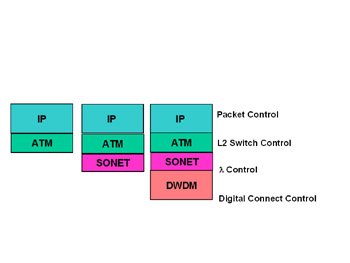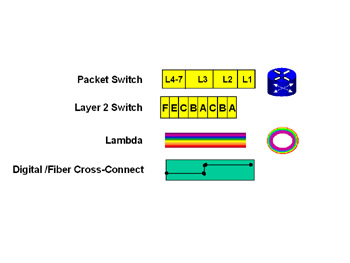Where Networking Is Today
|
| < Day Day Up > |
|
For years now, the datacom and the telecom networks have existed in different worlds. Having different objectives and customer bases, each discipline has formed its own language, procedures, and standards. Placing data on a telecom network was a challenging and often difficult task. Placing datacom traffic onto a voice network required encapsulating several layers.
In Figure 6.2, we see data traffic that has been stacked on top of an ATM layer. It has to be stacked again on the SONET network to allow for sending. Additional stacking takes place in order to ensure compatibility between this traffic and an optical DWDM network.

Figure 6.2: Data, ATM, SONET, and DWDM
Notice that each layer has its own management and control. This method of passing data onto a telecom network is both inefficient and costly. Interfacing between layers requires manual provisioning; different types of service providers manage each layer separately. Reducing the number of interface layers promises to both reduce overall operational cost and improve packet efficiency. GMPLS concepts promise to fulfill the aspiration of having one interface and one centralized automatic control.
As the world of telecom marches toward its goal of an all-optical network, we find that the required paths of data packets are varied; they must pass across several different types of networks before being carried by an optical network. These network types, which have been defined in several draft RFCs, include packet switch networks, Layer 2 switch networks, Lambda switch networks, and fiber switch networks (see Figure 6.3).

Figure 6.3: Network Types
|
| < Day Day Up > |
|
EAN: 2147483647
Pages: 138